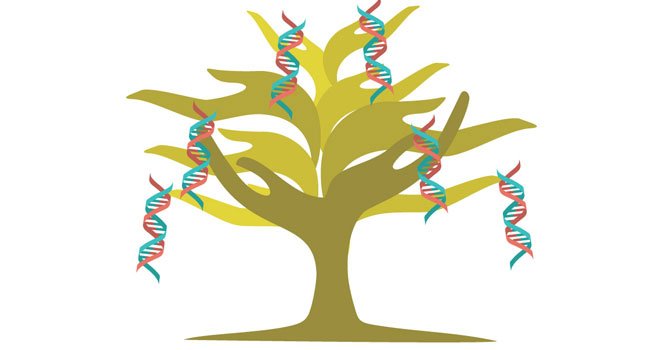
© 2015 50plus Senior News, All rights reserved.
The Search for Our Ancestry: DNA and Family Trees
Angelo Coniglio | Nov 6, 2014, 6 a.m.

Contrary to what many believe (and to the disappointment of the ill-informed), DNA tests, in and of themselves, cannot take a sample of one’s genetic material and magically produce a list of ancestors by name and date, going back generation upon generation.
The key to developing that kind of personal ancestry is to have hundreds (or thousands—the more the merrier) of donors have their DNA tested and then compared.
The actual “family tree” enhancement comes not from the DNA tests, but from knowledge that may have been compiled by conventional means (what I call “paper genealogy”) by one or several donors with matching DNA.
I’ll use some examples from 23andMe to augment my discussion. Other DNA-testing venues are similar. When you register on 23andMe, you (voluntarily) provide important information about yourself: your current residence; ancestral villages; and common family and ancestral surnames.
After your DNA is analyzed, 23andMe adds items to your list: ancestry, the geographical place where most of your “ancestral composition” occurred about 500 years ago (mine is Southern Europe); and codes for the “maternal haplogroup” and “paternal haplogroup” representing some of your ancestors’ whereabouts 5,000 to 25,000 years ago (my haplogroups are, respectively, H3 and I2b1).
In addition to characterizing a donor by ancestral composition of 500 years ago, and identifying his/her haplogroups from the distant past, 23andMe provides a list of DNA relatives identified as ‘‘23andMe members who share a relationship with you.”
This is a list (coded by the participant for privacy) that shows your purported relatives who are in the 23andMe database, from the closest to the most distant. The closest one shown in my case is a “second to fourth cousin,” and the most distant (number 551 on the list) is identified only as a “distant cousin.”
Next to each name in the list is the voluntary information that person entered—and here’s the rub: Some people give (as I do) their own full, uncoded names, as well as a number of ancestral origins and dozens of family surnames; others give no name, no ancestral towns, no surnames.
Why anyone joins a DNA service and then shares no information is beyond me, because it is that very information that one uses to see whether there are any obvious reasons for assuming a relationship.
Each person in the list, whether they have given much, or only minimal, information, can be contacted through 23andMe. I can simply send a message, asking the person to start a conversation with me, all protected and private, through 23andMe; or I can request that the person share their genome (genetic blueprint) with me.
The person can then elect to share their health and genealogical information or only their genealogical information, or they can decline to share anything (again, why join the service and then decline to share?).
Those who agree to share information can then be selected for comparison, which shows a bar graph of the 23 chromosome pairs, highlighting those segments of certain chromosomes that are an exact match to mine. A measure of DNA length is the “centiMorgan” (cM). Most venues consider matching segments of 7 cM or longer as significant: that is, showing a genetic relationship between two people.
If two close relatives had their DNA compared, there would be a large number of long segments that matched, in most of the chromosomes. The more distant the relationship, the fewer and shorter the matching segments would be.
Next time: hits and misses.
|
Write to Angelo at genealogytips@aol.com or visit his
website, www.bit.ly/AFCGen.
He is the author of the book The Lady of the Wheel (La Ruotaia), based on his genealogical research of Sicilian foundlings. For more information, see www.bit.ly/SicilianStory. |





